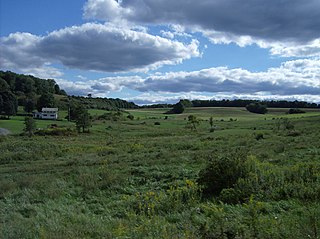Opinion of the Court
After appeals, the Supreme Court affirmed the open fields rule derived from Hester v. United States (1924), and decided that the officers' actions did not constitute a "search" under the Fourth Amendment. The Court held:
[A]n individual may not legitimately demand privacy for activities conducted out of doors in fields, except in the area immediately surrounding the home...The [Fourth] Amendment reflects the recognition of the Framers that certain enclaves should be free from arbitrary government interference. For example, the Court since the enactment of the Fourth Amendment has stressed ‘the overriding respect for the sanctity of the home that has been embedded in our traditions since the origins of the Republic.’ Id at 178.
The Court cited policy reasons for preserving the open fields rule, stating that "open fields do not provide the setting for those intimate activities that the Amendment is intended to shelter from government interference or surveillance." Id at 178. The Court also cited practical considerations as weighing on its decision, since open fields "usually are accessible to the public," and "no trespassing" signs are generally ineffective at "bar[ring] the public from viewing open fields in rural areas," and "the public and police lawfully may survey lands from the air." Id at 178-179. Because of these considerations, the Court declined to accept the defendants' expectation of privacy as one that "society recognizes as reasonable." Id at 178-179.

The Fourth Amendment to the United States Constitution is part of the Bill of Rights. It prohibits unreasonable searches and seizures. In addition, it sets requirements for issuing warrants: warrants must be issued by a judge or magistrate, justified by probable cause, supported by oath or affirmation, and must particularly describe the place to be searched and the persons or things to be seized.

Search and seizure is a procedure used in many civil law and common law legal systems by which police or other authorities and their agents, who, suspecting that a crime has been committed, commence a search of a person's property and confiscate any relevant evidence found in connection to the crime.

The open-fields doctrine, in the U.S. law of criminal procedure, is the legal doctrine that a "warrantless search of the area outside a property owner's curtilage" does not violate the Fourth Amendment to the United States Constitution. However, "unless there is some other legal basis for the search," such a search "must exclude the home and any adjoining land that is within an enclosure or otherwise protected from public scrutiny."
In common law, the curtilage of a house or dwelling is the land immediately surrounding it, including any closely associated buildings and structures, but excluding any associated "open fields beyond", and also excluding any closely associated buildings, structures, or divisions that contain the separate intimate activities of their own respective occupants with those occupying residents being persons other than those residents of the house or dwelling of which the building is associated.
Katz v. United States, 389 U.S. 347 (1967), was a landmark decision of the U.S. Supreme Court in which the Court redefined what constitutes a "search" or "seizure" with regard to the protections of the Fourth Amendment to the U.S. Constitution. The decision expanded the Fourth Amendment's protections from the right of search and seizures of an individual's "persons, houses, papers, and effects", as specified in the U.S. Constitution, to include as a constitutionally protected area "what [a person] seeks to preserve as private, even in an area accessible to the public".
Florida v. Riley, 488 U.S. 445 (1989), was a United States Supreme Court decision which held that police officials do not need a warrant to observe an individual's property from public airspace.
California v. Greenwood, 486 U.S. 35 (1988), was a case in which the Supreme Court of the United States held that the Fourth Amendment does not prohibit the warrantless search and seizure of garbage left for collection outside the curtilage of a home.
Olmstead v. United States, 277 U.S. 438 (1928), was a decision of the Supreme Court of the United States, in which the Court reviewed whether the use of wiretapped private telephone conversations, obtained by federal agents without judicial approval and subsequently used as evidence, constituted a violation of the defendant’s rights provided by the Fourth and Fifth Amendments. In a 5–4 decision, the Court held that neither the Fourth Amendment nor the Fifth Amendment rights of the defendant were violated. This decision was later overturned by Katz v. United States in 1967.
Expectation of privacy is a legal test which is crucial in defining the scope of the applicability of the privacy protections of the Fourth Amendment to the United States Constitution. It is related to, but is not the same as, a right to privacy, a much broader concept which is found in many legal systems. Overall, expectations of privacy can be subjective or objective.
United States v. Dunn, 480 U.S. 294 (1987), is a U.S. Supreme Court decision relating to the open fields doctrine limiting the Fourth Amendment of the U.S. Constitution.
United States v. Pace, 955 F.2d 270, cert. denied, 502 U.S. 883 (1992) is a United States Court of Appeals for the Fifth Circuit court decision relating to the open fields doctrine limiting the scope of the Fourth Amendment of the U.S. Constitution.
United States v. Burton, 894 F.2d 188, cert. denied, 498 U.S. 857 (1990) is a United States Court of Appeals for the Sixth Circuit court decision relating to the open fields doctrine limiting the scope of the Fourth Amendment of the U.S. Constitution.
California v. Ciraolo, 476 U.S. 207 (1986), was a case decided by the United States Supreme Court, in which it ruled that warrantless aerial observation of a person's backyard did not violate the Fourth Amendment to the United States Constitution.
Welsh v. Wisconsin, 466 U.S. 740 (1984), was a 1983 case before the US Supreme Court determining whether a warrantless arrest violates the Fourth Amendment protection against unlawful search and seizure.
United States v. Knotts, 460 U.S. 276 (1983), was a United States Supreme Court case regarding the use of an electronic surveillance device. The defendants argued that the use of this device was a Fourth Amendment violation. The device in question was described as a beeper that could only be tracked from a short distance. During a single trip, officers followed a car containing the beeper, relying on beeper signal to determine the car's final destination. The Court unanimously held that since the use of such a device did not violate a legitimate expectation of privacy there was no search and seizure and thus the use was allowed without a warrant. It reasoned that a person traveling in public has no expectation of privacy in one's movements. Since there was no search and seizure there was not a Fourth Amendment violation.
United States v. Jones, 565 U.S. 400 (2012), was a landmark United States Supreme Court case which held that installing a Global Positioning System (GPS) tracking device on a vehicle and using the device to monitor the vehicle's movements constitutes a search under the Fourth Amendment.
Soldal v. Cook County, 506 U.S. 56 (1992), was a United States Supreme Court case in which the Court held that a seizure of property like that which occurs during an eviction, even absent a search or an arrest, implicates the Fourth Amendment. The Court also held that the Amendment protects property as well as privacy interests, in both criminal as well as civil contexts. Finally, saying that "certain wrongs affect more than a single right", the Court left open the possibility that the Fourteenth Amendment's protections against deprivation of property without due process of law may also be implicated.

Florida v. Jardines, 569 U.S. 1 (2013), was a United States Supreme Court case which resulted in the decision that police use of a trained detection dog to sniff for narcotics on the front porch of a private home is a "search" within the meaning of the Fourth Amendment to the United States Constitution, and therefore, without consent, requires both probable cause and a search warrant.
Riley v. California, 573 U.S. 373 (2014), is a landmark United States Supreme Court case in which the Court unanimously held that the warrantless search and seizure of digital contents of a cell phone during an arrest is unconstitutional.
Dow Chemical Co. v. United States, 476 U.S. 227 (1986), was a United States Supreme Court case decided in 1986 dealing with the right to privacy and advanced technology of aerial surveillance.




